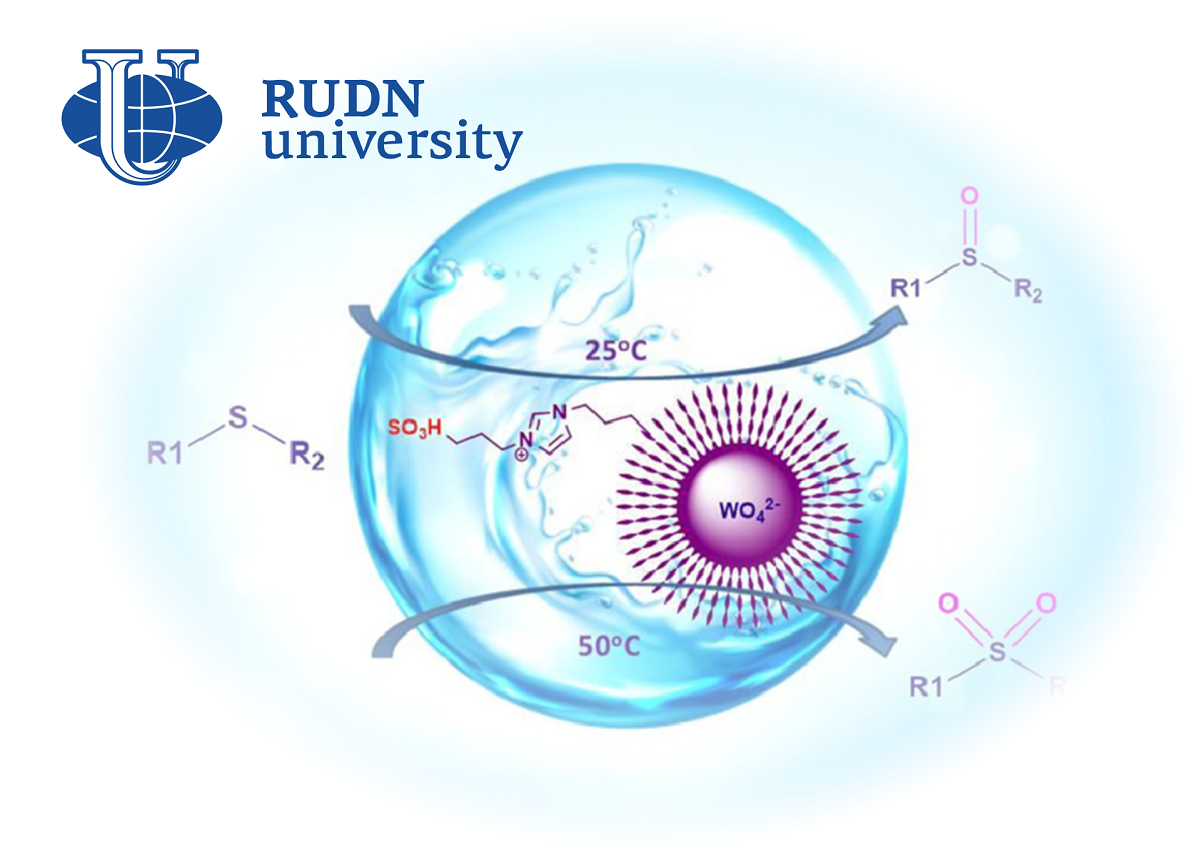RUDN chemists have created a reusable switch catalyst for the synthesis of two different compounds
Sulfur analogues of esters are called sulfides. When they are oxidized, one or two oxygen atoms will join the sulfur atom. It turns out sulfoxides or sulfones. Sulfones are used, for example, as dyes for fabrics and paper, and a number of sulfoxides are part of anti-ulcer drugs. One of the main problems in the oxidation of sulfides is to attach the right amount of oxygen atoms to sulfur, that is, for example, not to peroxify the sulfide with two atoms instead of one and not to get sulfone instead of sulfoxide. RUDN chemists have created a universal catalyst — it is suitable for the synthesis of both sulfones and sulfoxides and “switches” from one mode to another when the temperature changes. In addition, it allows the reaction to be carried out in environmentally friendly conditions, and it can be reused.
“One of the main problems with selective oxidation of sulfides to sulfoxides is excessive oxidation to sulfones. Strong oxidizers easily oxidize sulfides to sulfones, but this can also happen with milder reagents. We have shown the possibility of using a switchable catalyst for the oxidation of sulfides to sulfoxides or sulfones depending on the reaction temperature. The analysis of the reaction conditions showed that the catalyst works best in an aqueous environment, which, together with the use of oxygen as an oxidizer and the possibility of reuse, creates one of the most environmentally friendly conditions for such oxidation,” Professor Leonid Voskresensky, Dean of the Faculty of Physics, Mathematics and Natural Sciences of the RUDN.
Chemists have proposed a catalyst that consists of a nanomaterial based on a porous organosilicon framework and an ionic liquid of tungsten oxide. To prove its catalytic effect, the RUDN chemists added it to a solution of one of the sulfides and stirred the mixture at a temperature of 25℃ or 50℃ and with oxygen supply. After the reaction, the nanocatalyst was filtered and washed in ethyl acetate. Chemists optimized the reaction by “picking up” the solvent, reaction time and amount of catalyst, which give the maximum yield of the final product.
The reaction was most effective under the most “simple” conditions — 10 mg of catalyst, an aqueous solution, two hours of reaction. Under such conditions, 98% of the product yield was achieved. At room temperature, sulfoxides were obtained (yield 92%-99% depending on the initial sulfide), at an increase in temperature to 50℃ — sulfones (90%-97%). After eight cycles of use and washing, the efficiency of the catalyst practically did not decrease.
“We have proven the effectiveness of this reusable nanocatalyst for selective aerobic oxidation of sulfides to sulfoxides or sulfones depending on temperature. In addition, the catalyst, which is easily separated from the reaction mixture, can be reused without significantly reducing its performance. The simplicity of the preparation of the catalyst and its wide range of applications for both sulfoxides and sulfones under mild conditions make it suitable for practical use,” — Rafael Luque, professor at the Center for Molecular Design and Synthesis of Innovative Compounds for Medicine of the RUDN.
The results are published in the journal Molecular Catalysis.
Sergey Ivanov, a scholar from St. Petersburg, has been named the first winner of RUDN University’s International Prize for Scientific Achievements in Mathematics, worth 5 million rubles.
Products derived from microalgae represent a cutting-edge development in the field of bioeconomy. The potential of this biological resource was discussed at the international research seminar “Foundations for a Green Sustainable Energy”, part of the BRICS Network University’s thematic group on “Energy”. The event was organized by the Institute of Ecology at RUDN University.
Ambassadors of Russian education and science met at a conference in RUDN University to discuss how they can increase the visibility of Russian universities and research organizations in the world, and attract more international students in Russia.
